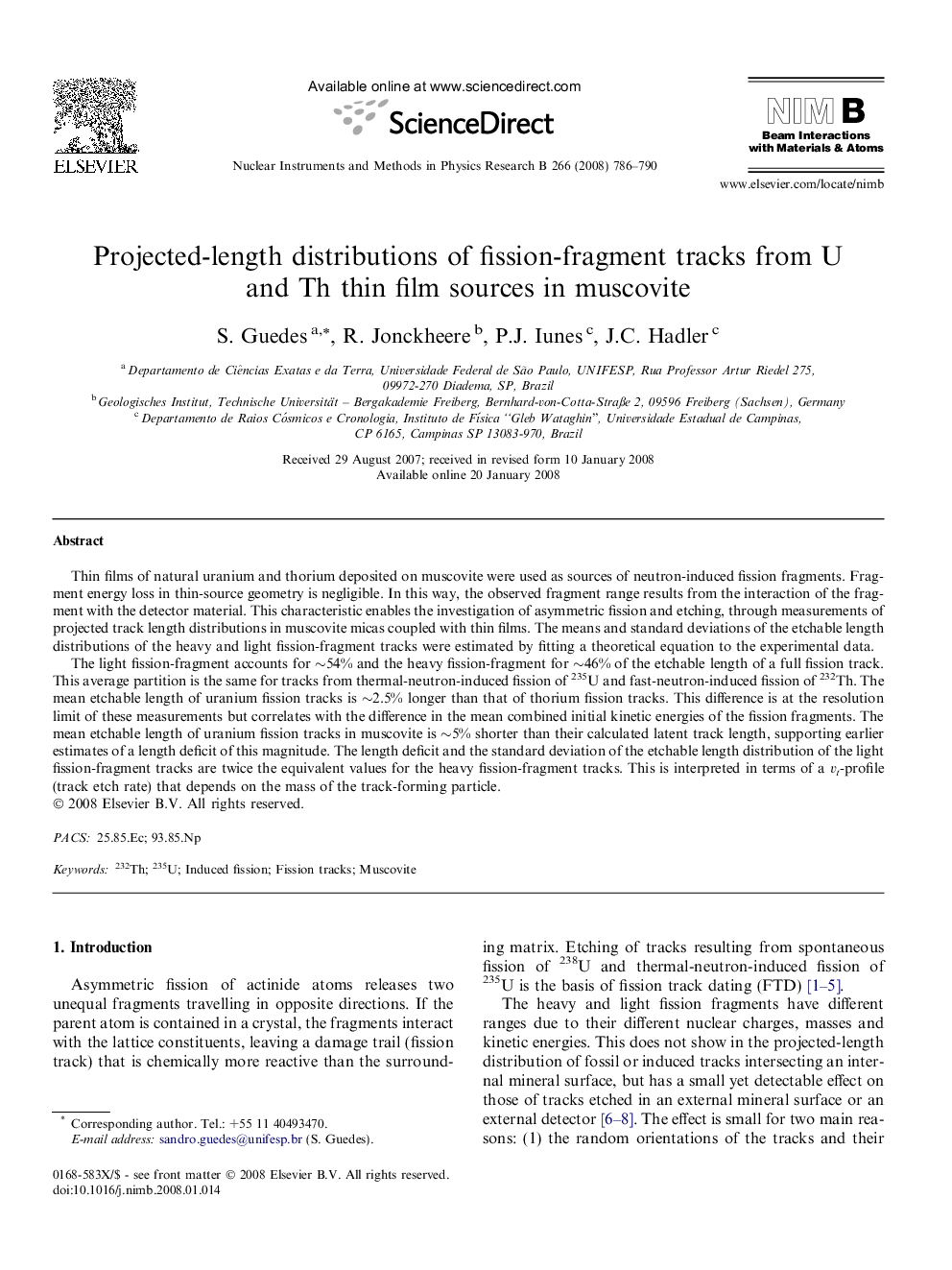| Article ID | Journal | Published Year | Pages | File Type |
|---|---|---|---|---|
| 1685318 | Nuclear Instruments and Methods in Physics Research Section B: Beam Interactions with Materials and Atoms | 2008 | 5 Pages |
Thin films of natural uranium and thorium deposited on muscovite were used as sources of neutron-induced fission fragments. Fragment energy loss in thin-source geometry is negligible. In this way, the observed fragment range results from the interaction of the fragment with the detector material. This characteristic enables the investigation of asymmetric fission and etching, through measurements of projected track length distributions in muscovite micas coupled with thin films. The means and standard deviations of the etchable length distributions of the heavy and light fission-fragment tracks were estimated by fitting a theoretical equation to the experimental data.The light fission-fragment accounts for ∼54% and the heavy fission-fragment for ∼46% of the etchable length of a full fission track. This average partition is the same for tracks from thermal-neutron-induced fission of 235U and fast-neutron-induced fission of 232Th. The mean etchable length of uranium fission tracks is ∼2.5% longer than that of thorium fission tracks. This difference is at the resolution limit of these measurements but correlates with the difference in the mean combined initial kinetic energies of the fission fragments. The mean etchable length of uranium fission tracks in muscovite is ∼5% shorter than their calculated latent track length, supporting earlier estimates of a length deficit of this magnitude. The length deficit and the standard deviation of the etchable length distribution of the light fission-fragment tracks are twice the equivalent values for the heavy fission-fragment tracks. This is interpreted in terms of a vt-profile (track etch rate) that depends on the mass of the track-forming particle.
